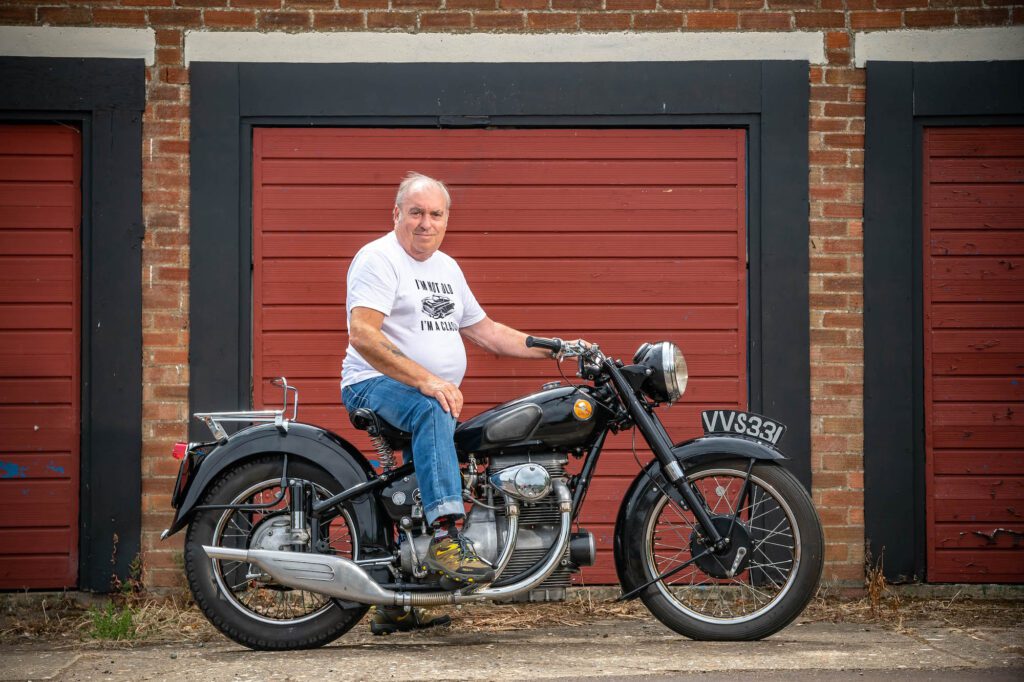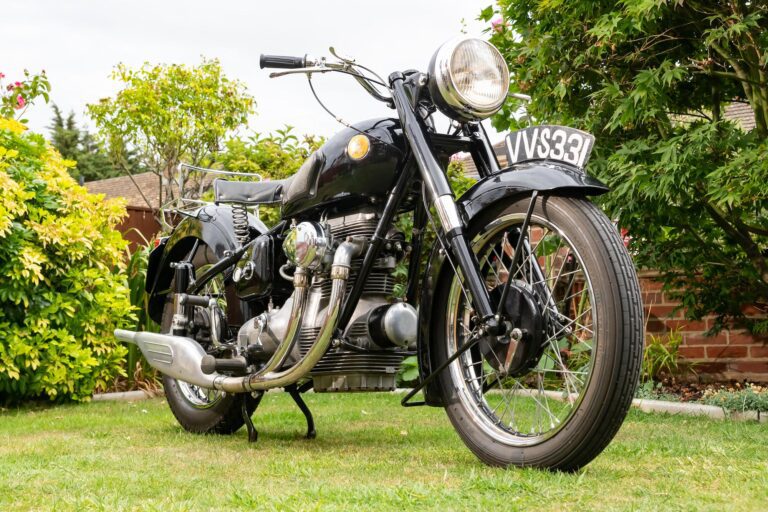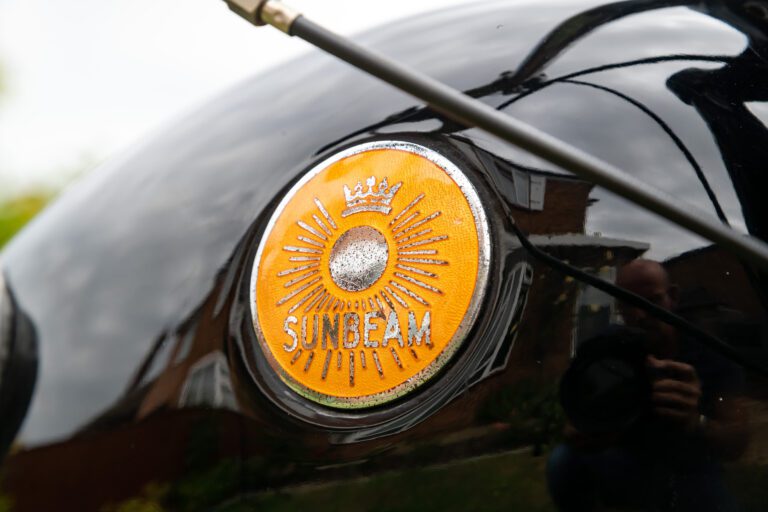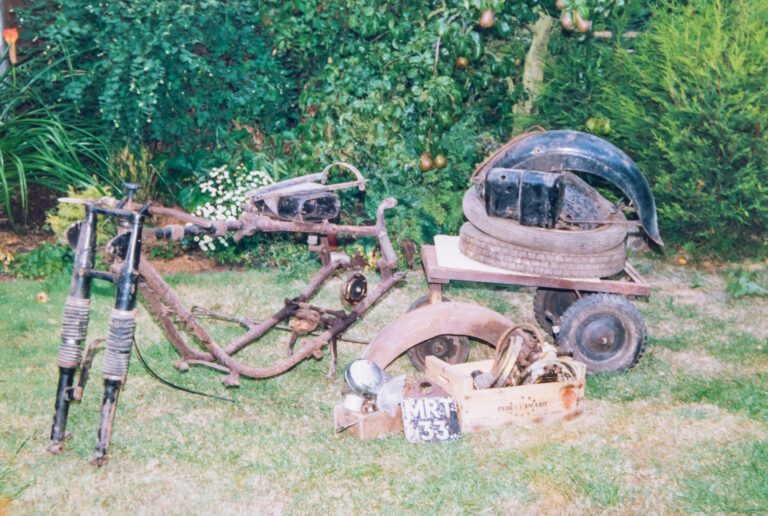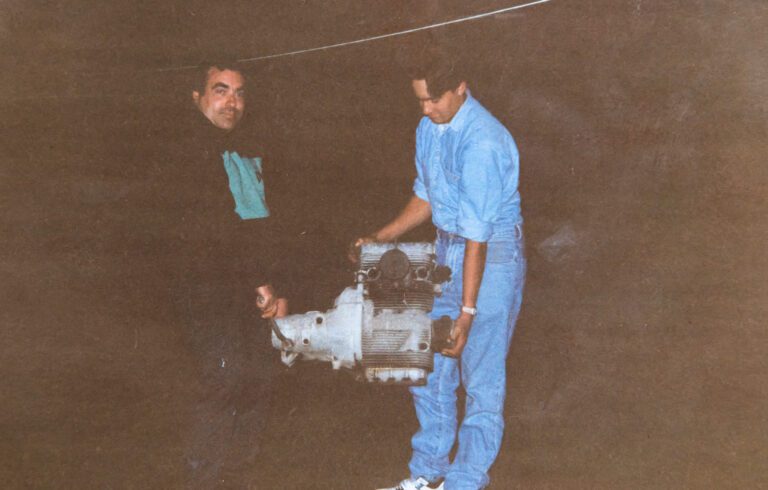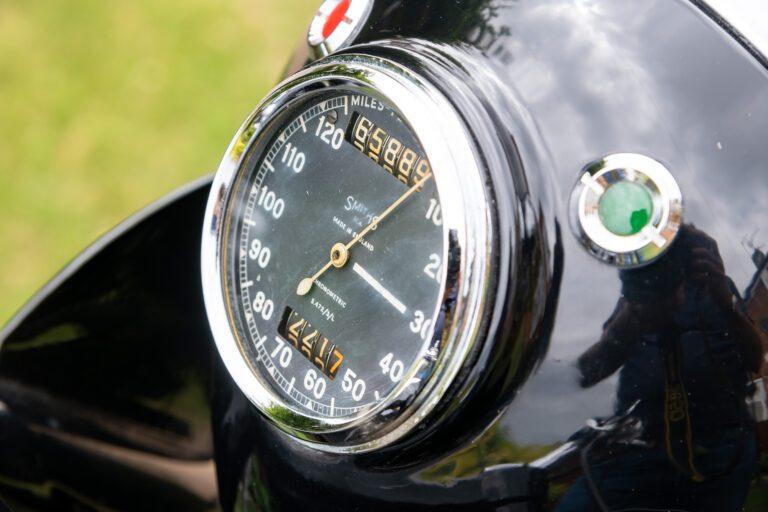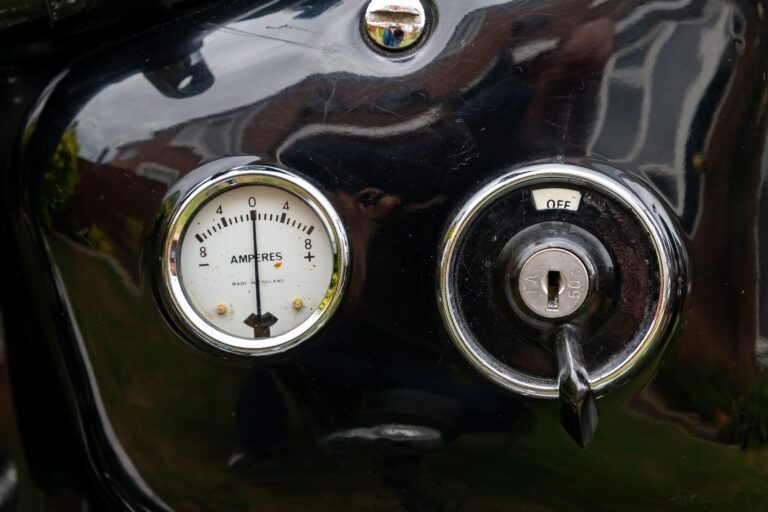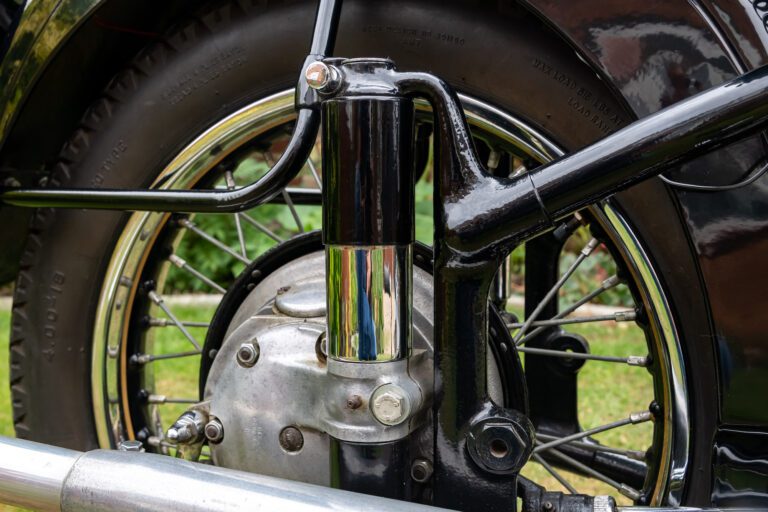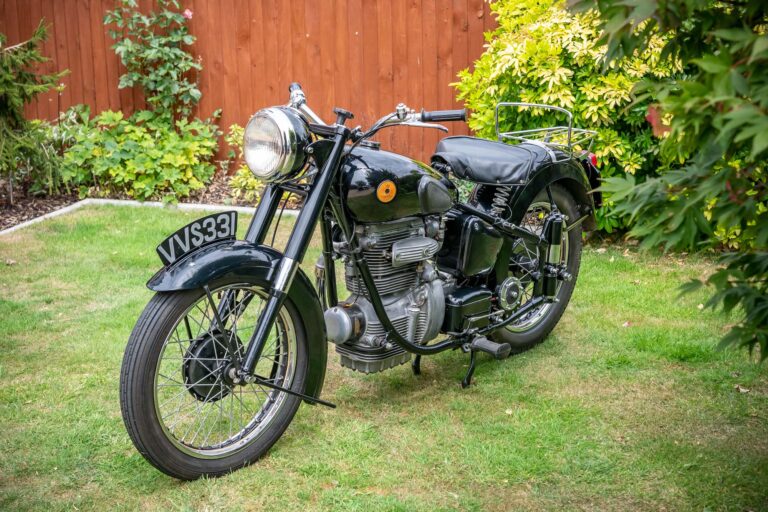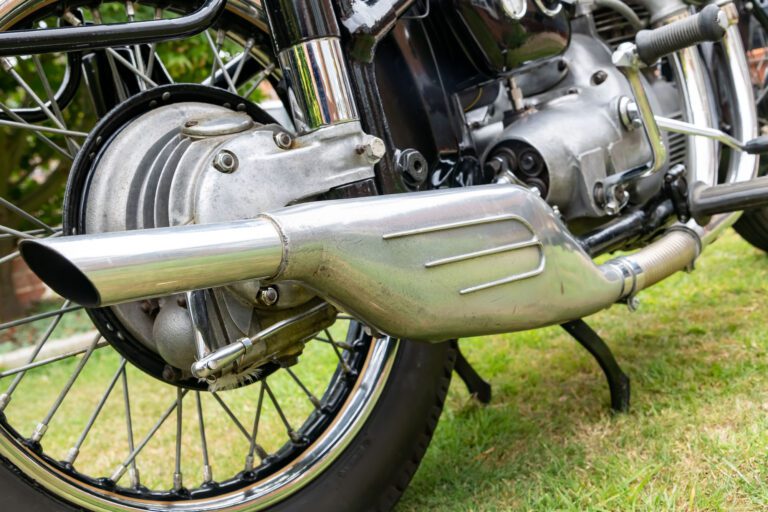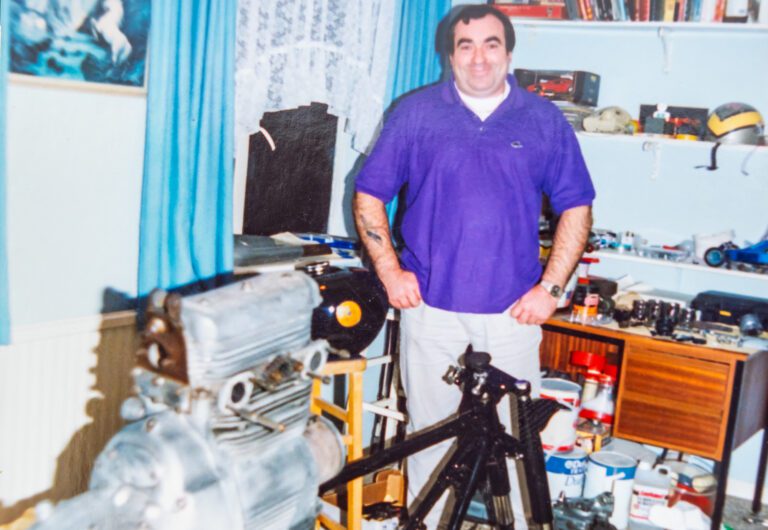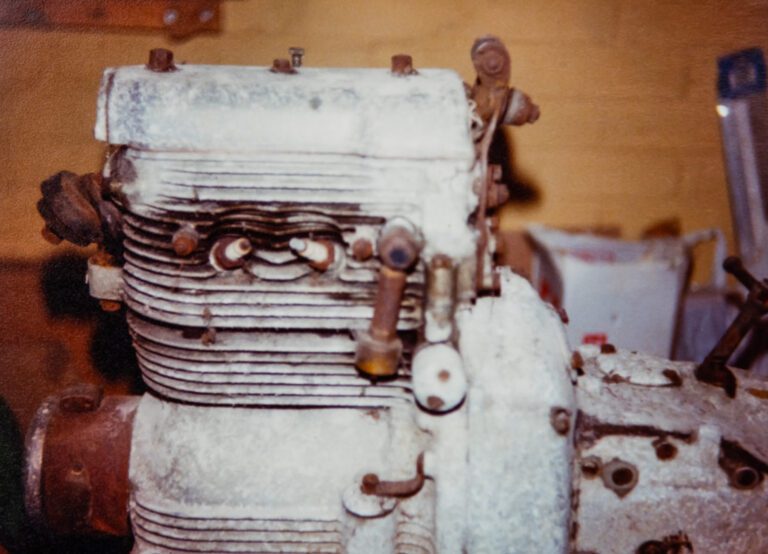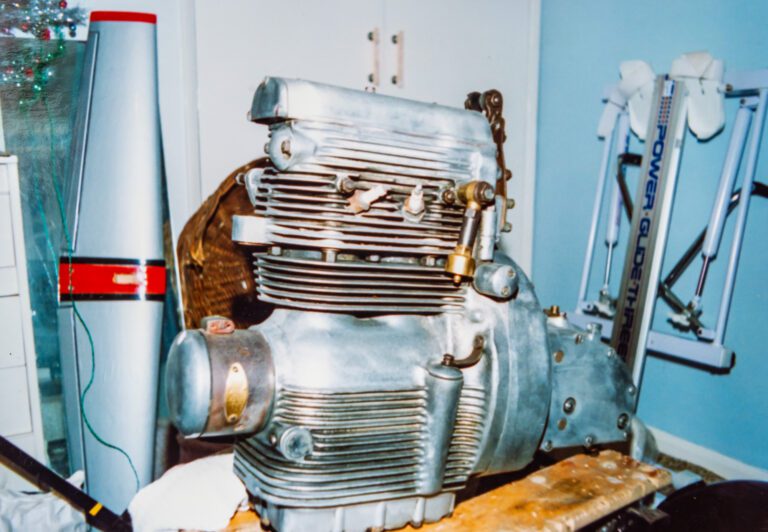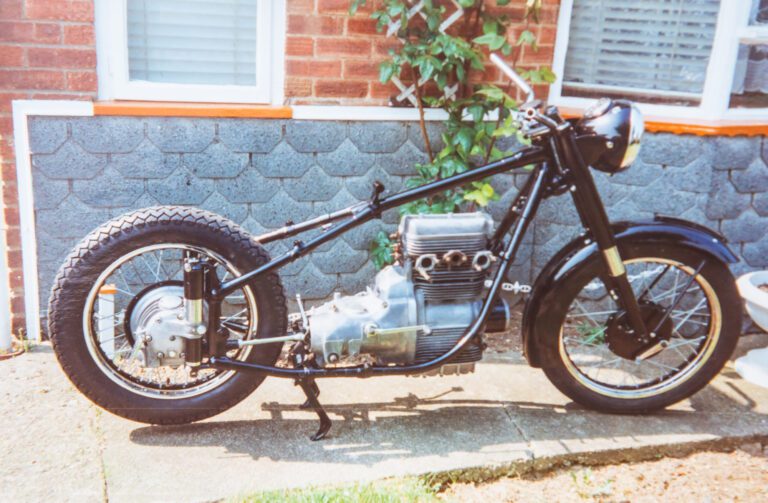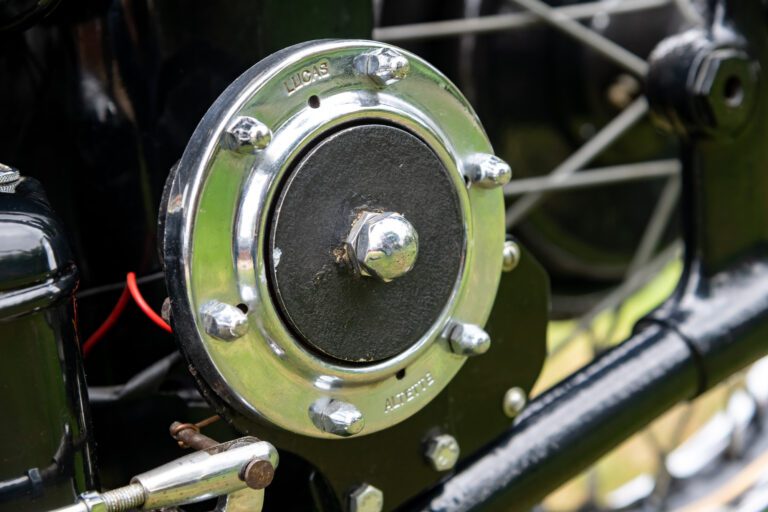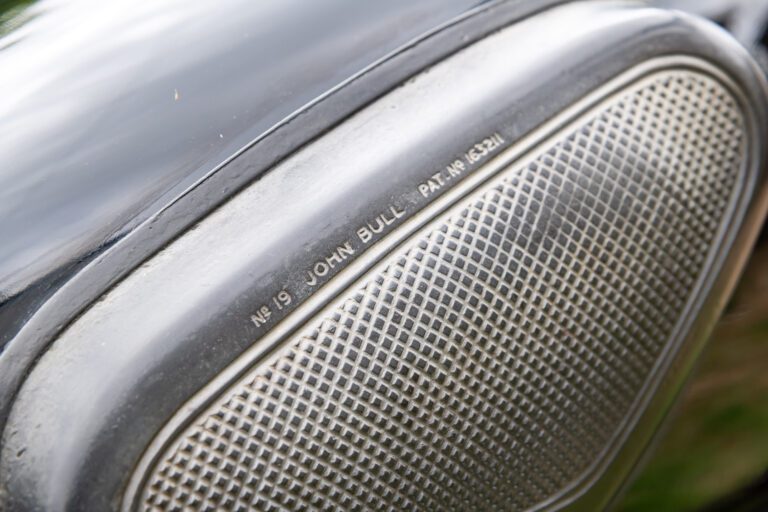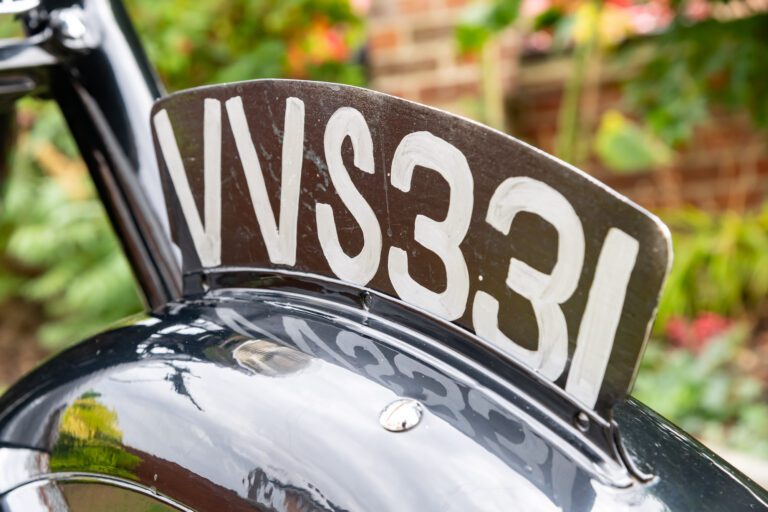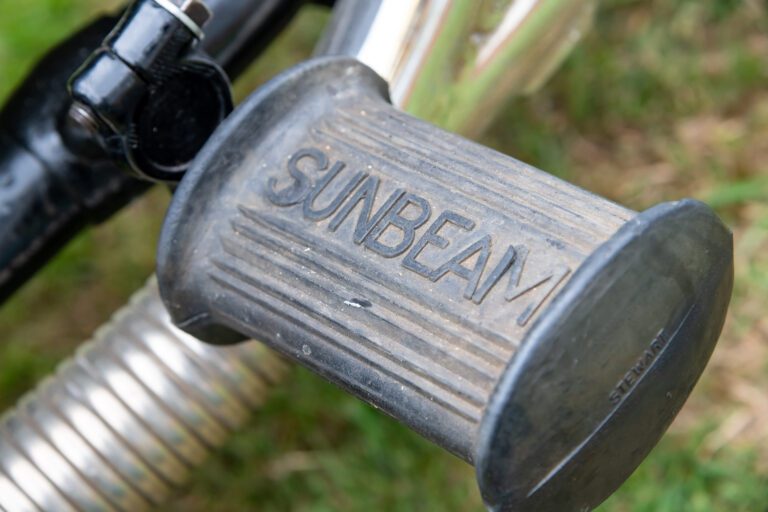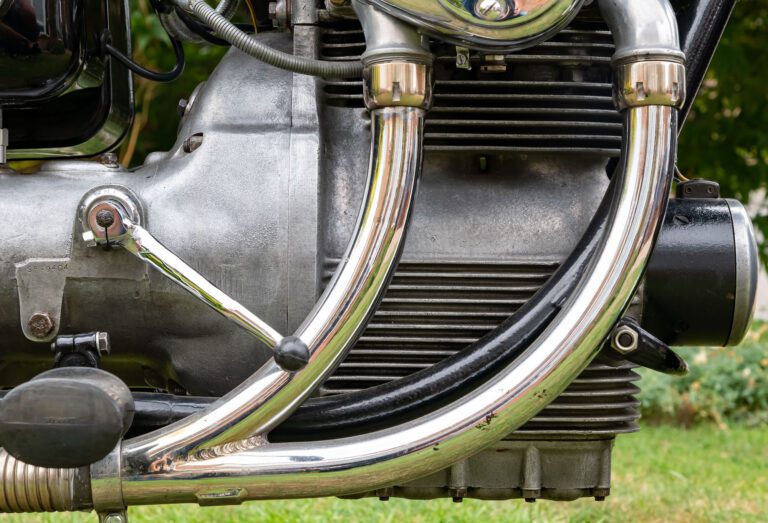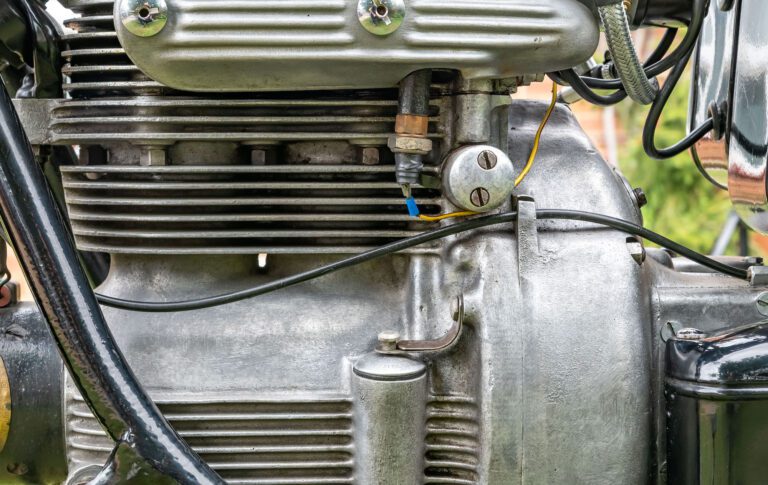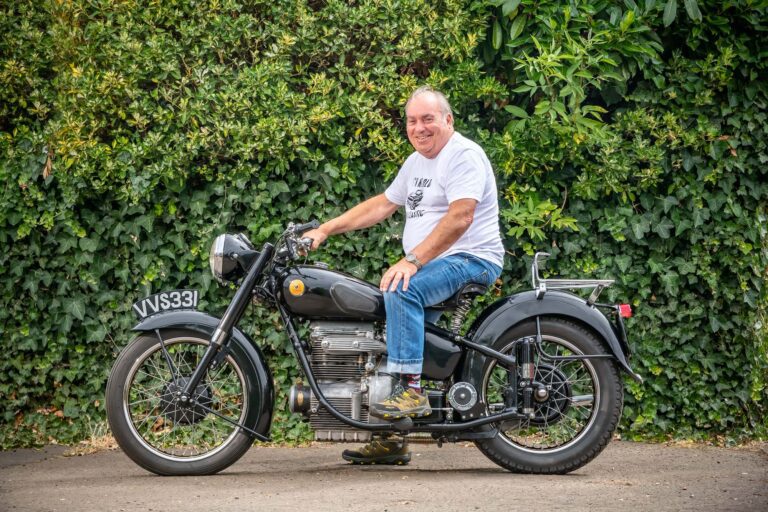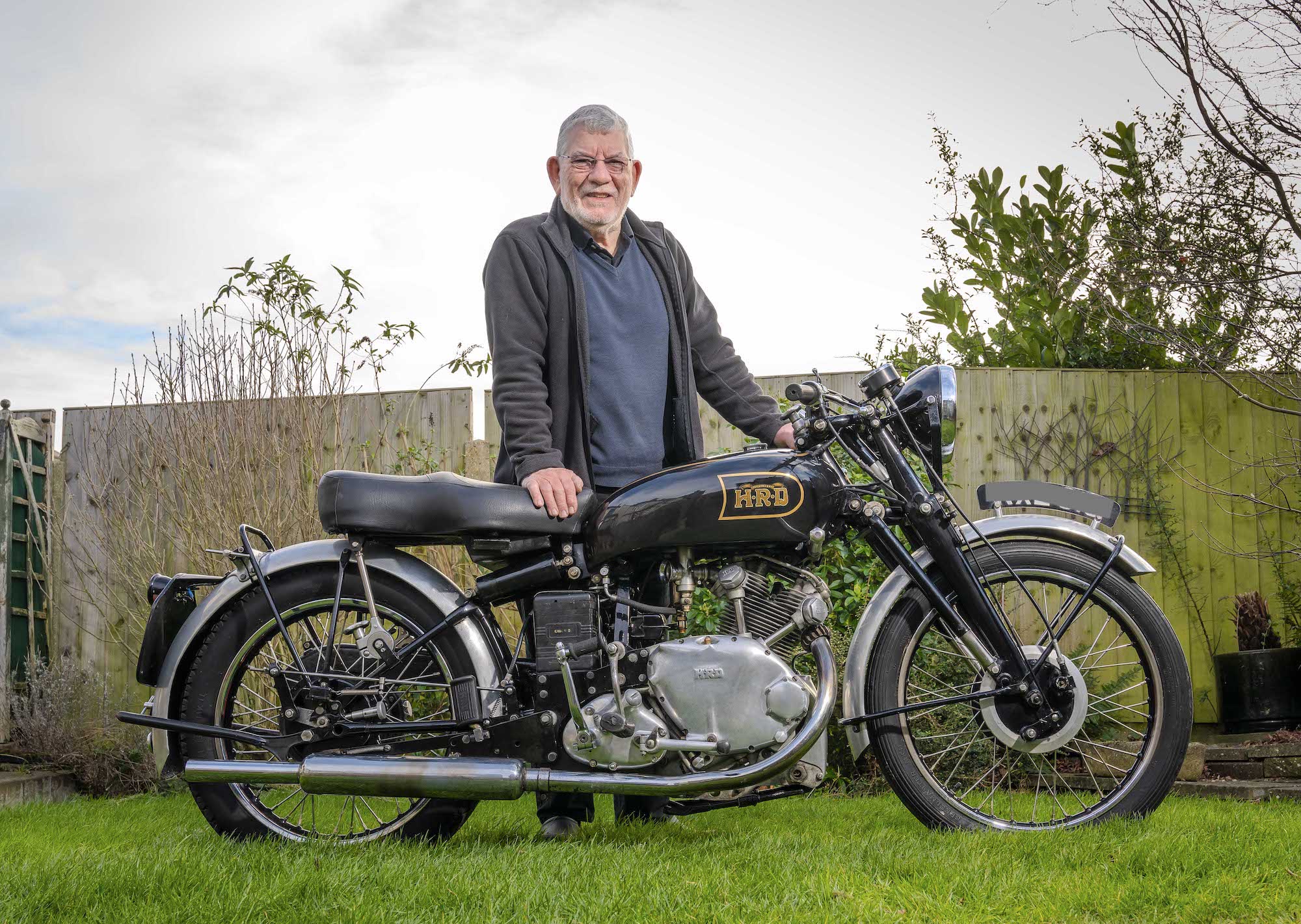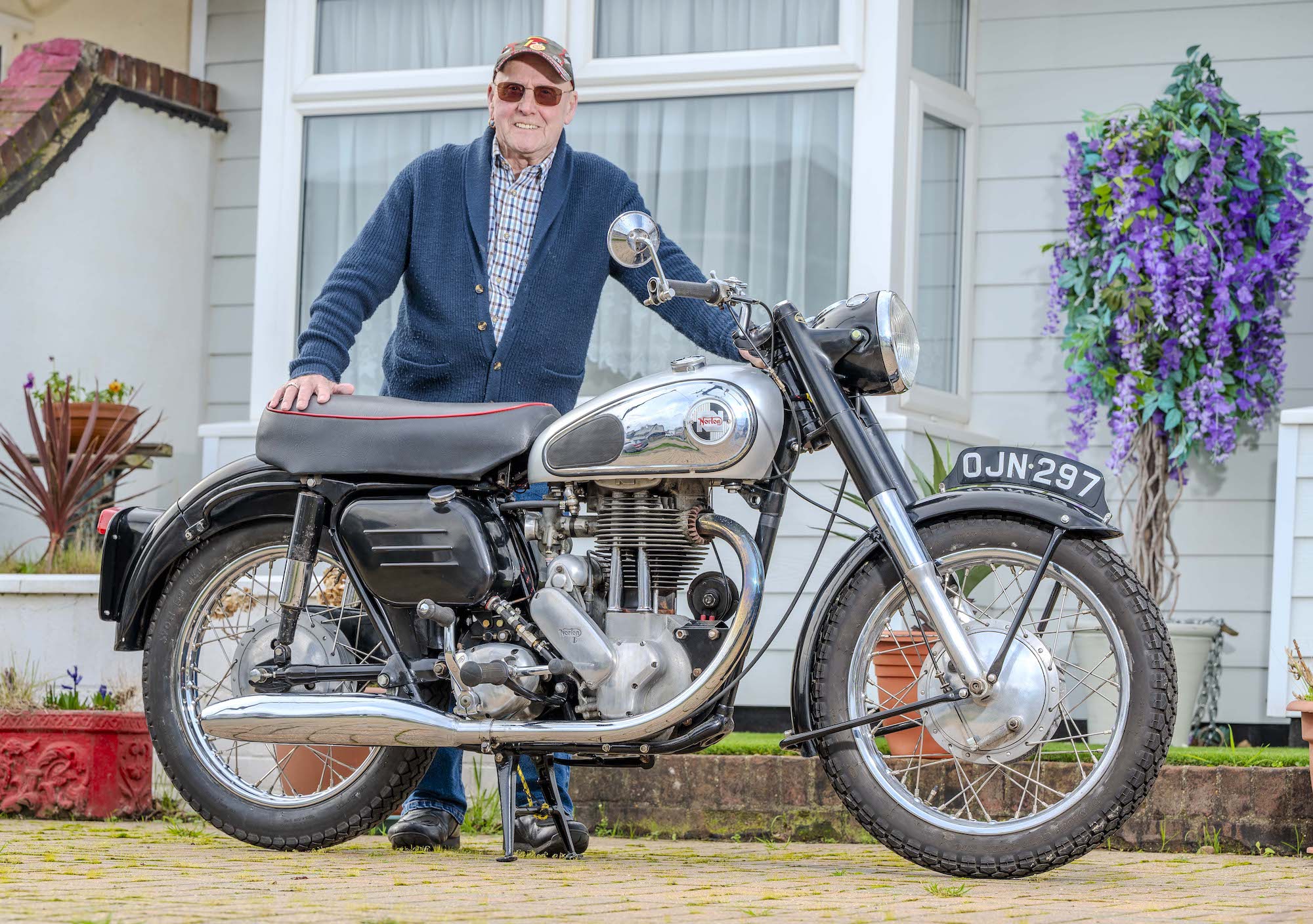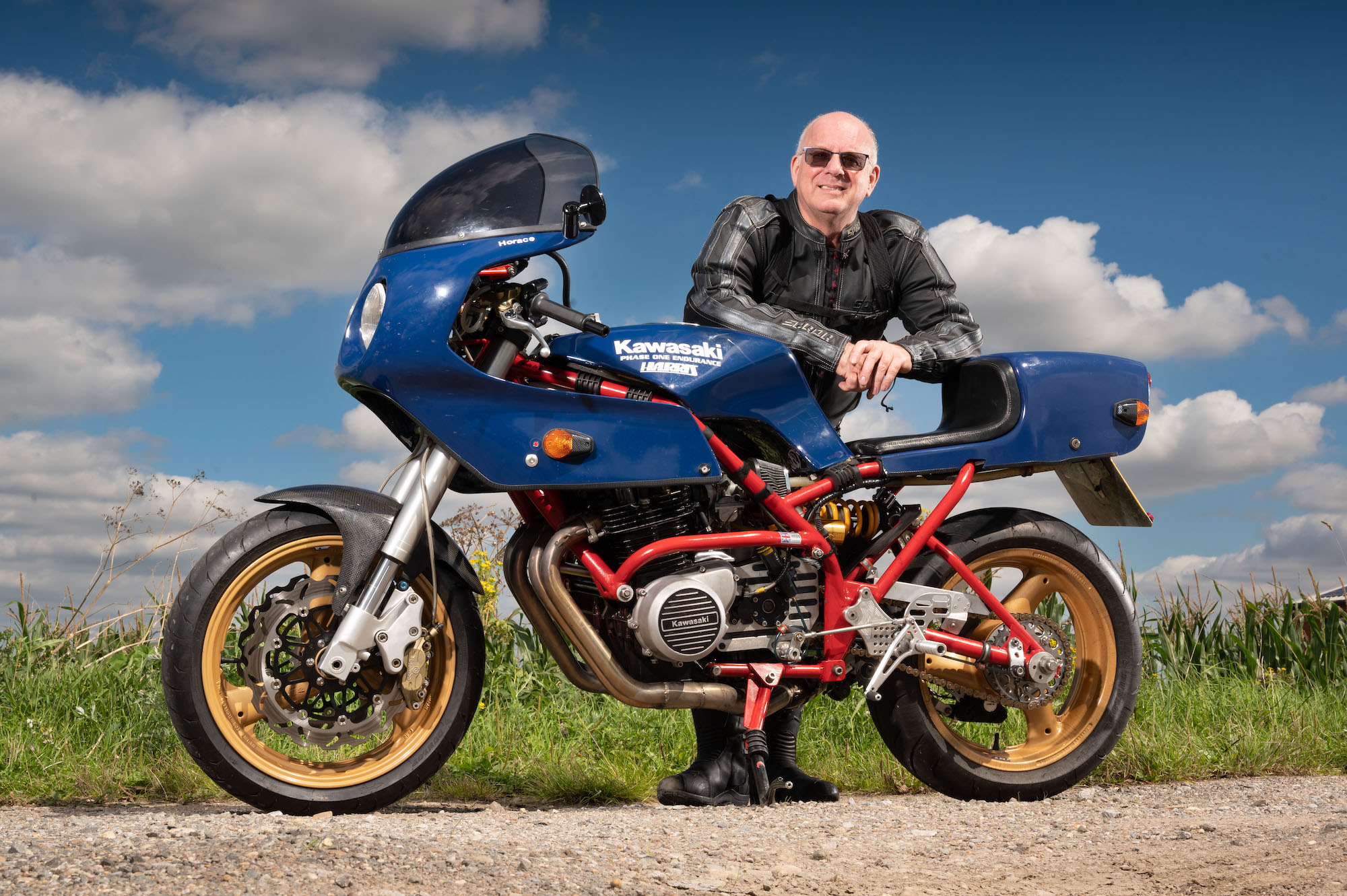When David Thurston agreed to buy a 1951 Sunbeam S8, sight unseen, from a friend, he had no idea what he was letting himself in for.
He wasn’t even that keen on the so-called ‘gentleman’s cruiser’ – he was more of a Bonneville man – but his friend Terry was in need of cash to help pay for his daughter’s wedding.
So one evening, David and his teenage son Sean headed out to look at the bike, which they were told had been stored in a shed at the bottom of Terry’s garden for 30 years.
No shed, no bike
Only there was no shed and, at first, no evidence of a bike, just a sprawling mass of brambles stretching away to the property’s boundary.
“It was a big old country garden, and he wasn’t even sure where the shed was,” says David, “but as we were cutting the brambles away we did find lots of rotting wood.
“Me and my son were there for about five nights after work cutting away and finding bits of bike here and there. The wheels were stuck in a fence to keep the chickens in and the spokes and rims had totally had it.
“It took us two or three nights to find the engine, which was totally away from the rest of the parts. There were lots of biscuit tins with electrical things like the alternator floating in mini swimming pools, obviously unusable.
“He had the tank and exhaust in his loft, and they were the only things that were recognisable.”
At that point, did David question his decision to part with £1,000 for the ultimate basket case?
“I didn’t know it was in bits quite like that,” he admits, “but he’s a smashing bloke, and I’d committed to it. I couldn’t suddenly say ‘you’re not going to have the money for your daughter’s wedding’.
“In truth, it was probably worth £20 for scrap, but the registration number was worth about £1,000, and that’s how I was looking at it.”
Having finally got the Sunbeam S8, or what was left of it, home in June 1990, no-one believed David would ever get it on the road.
“You’ll never do it”
“Everyone said to me ‘you’re daft, you’ll never do it’,” he says. “My wife Sally said ‘you’re totally wasting your time, you’ll never do it and it will lay in the garage forever more’, and I thought ‘no it won’t, I’m going to do it’. The more people said that to me, the more it made me want to do it.”
Another motivating factor was that David knew he couldn’t sell the number plate until the bike was back on the road.
And by June 1992, the bike was indeed back on the road.
Having put so much work into the Sunbeam, which is mostly used for local rides out, David has always resisted the temptation to cash in on his finished project.
“It’s a part of the family,” he says, “almost like one of the children. You’ve almost brought it up and created it.
“It will probably go to Sean, who’s had a few bikes but doesn’t have one at the moment. We did a lot of the work together, and when I’ve been stuck for space it’s sometimes been kept at his place.”
David started work as an apprentice bricklayer on his 15th birthday in 1966, and a year later he briefly cut his teeth on a Vespa 125 before passing his test on a BSA C15.
He moved on to cars, first a Mini and then a Sunbeam Alpine at 18, but within a couple of years he was lured back on to two wheels when he spotted a brand new Rickman Metisse while working on a construction project in Cambridge.
“A friend of mine wanted some parts for his bike and I went up to Andy Lee’s, and there was this Rickman Metisse standing outside for £675, and I bought it,” he remembers.
Missing Metisse
The Metisse story didn’t have a happy ending.
“I had it for about four years, but then I lent it to a friend and I haven’t seen it since,” he says. “Every time I asked for it he said ‘I’ve just got to do this or that to it, and then you can get it back’.
“I went round one day and they’d moved and gone, and I never did find them. I couldn’t go to the police because he’d been a mate, and I couldn’t claim on the insurance because I’d lent it freely to somebody. I’ve checked and it hasn’t been taxed or insured since it’s disappeared so it’s probably sitting in a shed somewhere or been sold for parts.”
Next up, David took to the racetrack on a Triumph Trident, even buying a brand new bike for £749 just for the engine and gearbox.
“I was building a 750 Trident race bike, and it was the only way of getting a new engine – there was nothing available,” he says. “I got it home, stripped it out, kept the engine and gearbox, and sold everything else for £30.
“I raced it in club events for about three years before it got totally smashed up. I couldn’t afford to carry on then, and the kids came along in the mid 70s.”
For years, David’s biking was restricted to borrowing rides, until he was offered the chance to buy the Sunbeam.
The S8 was a sportier evolution of the balloon-tyred S7, both bikes based on BMW R75 designs acquired as war reparations by Sunbeam’s owner BSA.
Like the BMW, the S8’s car-like OHC 500cc twin was shaft driven, but it was mounted inline and not parallel ‘across the frame’ like the R75 to make it look less German.
Gentleman’s cruiser
Early problems with vibration were cured by rubber engine mounts, producing a smooth ride and giving rise to the ‘gentleman’s cruiser’ description.
David says his Sunbeam was already pretty rough when Terry bought it cheap, intending to do it up for general use.
Clearly, it never happened, and it was left to father and 14-year-old son to try to piece together a machine they knew very little about.
They had the frame and forks, tin wear, engine, and a badly-damaged headlamp, but plenty of cables, gaskets, seat, nuts and bolts were missing, as well as all the electricals.
“I’ll be honest, at one stage I didn’t think I’d do it – is this going to work?” he says. “I’d never seen a shaft driven bike before, and there were lots of things where we couldn’t see how it worked – how the brake linkages worked and various other things.
“Initially, I also didn’t think it was going to go much further because I wasn’t aware at the time that parts for it were available.”
With no Sunbeams in the area to compare their bike with, David and Sean discovered that Stewart Engineering, then based at Coventry, had a comprehensive stock of parts for the S7 and S8.
“We went over there, but unfortunately we picked the one Saturday when there was a big classic bike show over the weekend, and they were due to pack up at 10am,” says David. “We just got in the door, took some photos of the bikes they had there and that was it. I’d hoped to spend some time there, work out what parts I needed and get them all in one go, but we ended up doing it by post from their very comprehensive catalogue.
Sunbeam parts aplenty
“There’s virtually nothing you can’t buy for a Sunbeam.”
The frame was shot-blasted and powder-coated for a finish closer to the original, while the tank and repaired headlight were painted with cellulose and finished in clear lacquer.
Draganfly Motorcycles carried out the paint and chrome work, and renovated the wheels, while David concentrated on the engine and running gear, with much of the early work carried out in the spare bedroom.
When it was all back together and running, David was surprised at how smooth it was, mostly thanks to the bike’s rubber-mounted engine.
“There’s no metal to metal anywhere on that bike where the engine’s connected to the frame,” he says. “Even the exhaust has got a flexible on it so it isn’t rigid, and I was surprised at how smooth it was.
“It wasn’t what I was used to, but it was better than I thought it would be.”
David kept his promise to Terry that its first journey would be back to what may well have been its last resting place.
“I always promised Terry that he would be the first one to see it finished,” he says. “He was over the moon but he didn’t dare ride it in case he fell off it. I still bump into him, and he still talks about it. He was very impressed.”
The Sunbeam’s second journey, however, was less auspicious. Sean was now working, and father and son rode the 15 miles to visit his foreman.
“Wired to the engine”
“I’d noticed that I kept flattening the battery and, on the way, it kept fading and fading, but thankfully we got there,” says David. “He was a very engineering-type man, and he got a couple of old batteries out of emergency lighting, and attached them to a bandolier around my neck, so I was wired to the engine to keep it running to get me home.”
Once home, David removed the dynamo, which runs off the crank, and discovered that the keyway on the end of the crank had failed.
“I stripped it down to see if I could get the crank welded up and have a new keyway ground in it, but when I took the head off I found that there was a little bit of play, so I ended up having new pistons, new crank, and new main bearings,” he says. “According to the speedometer, it had only done about 40,000, but I think it had been a very hard 20 years on the road before Terry bought it.”
Once the bike was back on the road, David listed the registration number – MRT 33 – for sale with Elite Registrations for about £1,500, hoping to recoup some of his outlay on the restoration.
With no takers, he took it off the market after a couple of years, and became fond of the plate.
“I’d cleared all my debts with the bike, and I quite liked the number plate because my name’s Thurston, and it was MRT – Mr T – and everybody used to call the bike Mr T,” he says.
“I’d forgotten all about it, and I was working late at the office one night when I got a phone call and this guy said ‘are you the owner of MRT 33? Would you sell it?’
“I told him it wasn’t on the market anymore but I was open to offers, and he came up with a figure of about £2,000, which was good. But I thought I’d push it because I didn’t really want to sell it, so I told him £3,000 would buy it.
“He said he had seven MRT plates on various vehicles and he needed another one, and mine was the only one he could find.”
Taking him on trust
David agreed to take him on trust, sending all the documents by post on the promise of receiving a cheque coming the other way, with the buyer – a Mark Richard Tomlin – agreeing to pay the cost of transfer fees and an age-related plate.
“The following day or the day after I got a cheque in the post, and about three weeks later all the documents came back with the new registration,” he says. “And that was it – we never met, and never spoke again.”
In one fell swoop, David had recouped the initial cost of the bike and its restoration.
“It’s been brilliant,” he says. “I tend to do short journeys, no more than 30 or 40 miles, though if I had somebody following me in a van I’d be happy to do 100 miles on it.
“Although in theory it should do 85mph, you don’t want to do much more than 55mph or oil starts spilling out.”
It was David’s only bike for about 10 years after 1992, but has since been joined by a Harley-Davidson Softail (Harley’s centenary model), a Triton 750, a Rickman trials, and a Phil Read replica Honda CB750.
The Sunbean S8 holds pride of place
But it’s the Sunbeam that holds pride of place in David’s garage, thanks largely to the hours of work invested in bringing it back from the dead.
“When you take something that’s a total basket case – it really was beyond ridiculous – and rebuild it, it almost becomes a part of you,” says David.
“As much as I sometimes could have done with the cash, maybe £5,000 or £6,000, I don’t think it will ever go. In fact, I know it will never go.”
